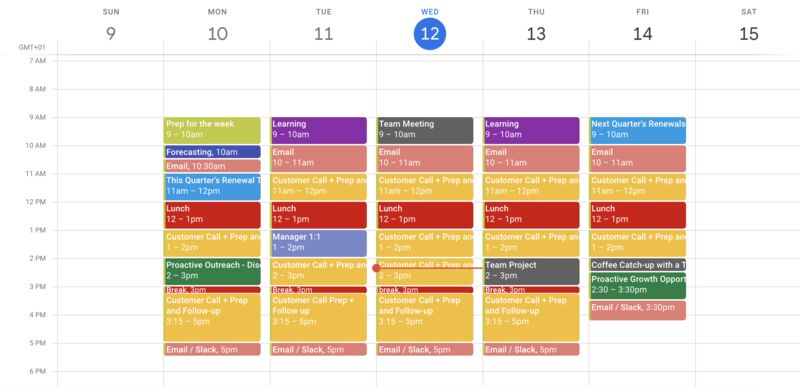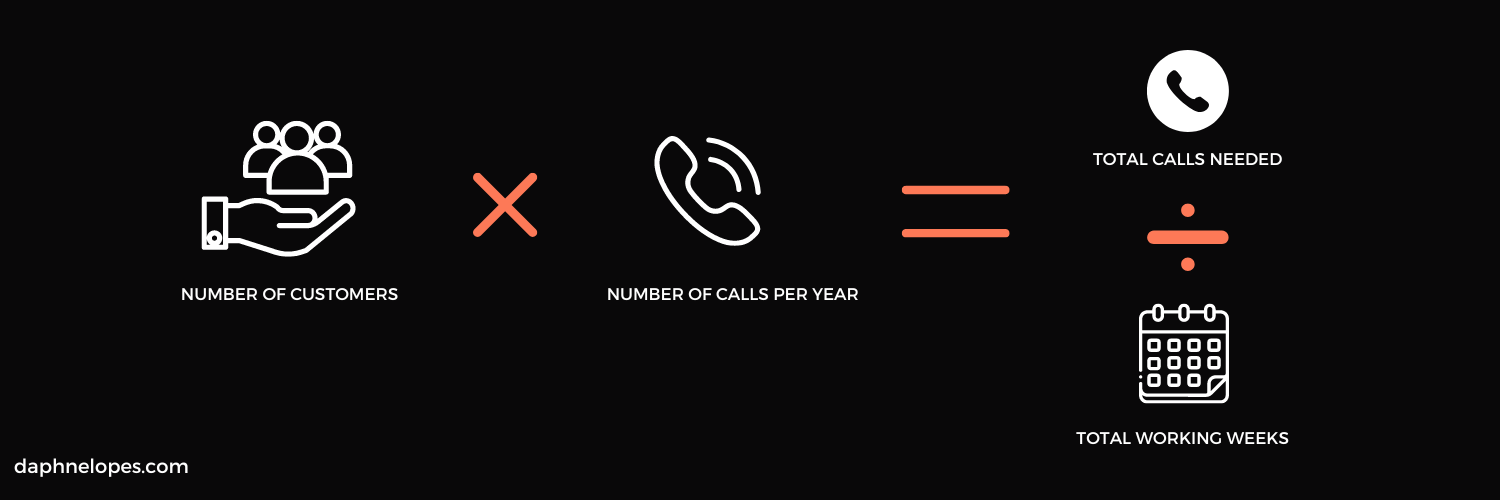
The CSM Operating Rhythm (Calendar Blueprint)
The #1 reason why CSMs fail to achieve their targets is a failure to prioritise the important over the urgent work.
As a #CSM, you often wear many hats. It can be overwhelming to field requests, drive proactive engagements, collaborate with sales and product and invest time in your own development.
How can you fit everything you need to do in one week?
The only way to do it is to get hyper-organised by planning your weeks intentionally, paying yourself first and working smart.
As a CSM, your priority should always be:
- Enable customer growth
- Staying Sharp
- Contributing to your broader team
This blueprint will help you fit all of these things in a week.
Mastering Your Calendar
This is an example that works for a 1:few CSMs in organisations where the CSM job is well-defined and the main expectation is to engage with customers to drive adoption, engagement, renewal and growth.
This blueprint works well if you have a dedicated book of business, and are measured in retention and growth (NRR), as well as activity-based or usage-based metrics.

In this blueprint calendar you can see how you can fit:
- 14 customer calls (10 x 30 mins | 4 x 1 hour)
- Proactive outreach for renewals over the following 6 months
- Proactive growth opportunity work
- 2 hours of intentional learning
- Communication time for emails and slacks
- 1 team project
- 1 coffee catch up
- Your Manager 1:1
- Team Meeting
- Planning time at the start of every week
You can achieve all of that without ever working late into the evenings, wrapping up early on a Friday and taking breaks during your day.
You can reshuffle the events to suit the times you are most energised, your family life, personal commitments etc.
If this works for you, you can add this blueprint to your Google calendar using this link.
How to adapt this method?
#1 Customer Calls
In any CSM role, talking to customers will be essential. Data shows that in B2B SaaS, engagements are highly correlated with customer adoption, retention and growth. That’s why companies invest in 1:few CSM models.
To decide how many calls you should have a week, use the following formula:

Establishing the volume of calls is important as it will anchor your calendar. The main questions to ask are:
- How many customers do you have?
- How many times a year d you need to talk to them?
- How many calls is that in total?
- How many calls do you need to do per week to deliver on that engagement cadence?
Once you understand the volume of calls you need, the next step is getting them booked.
How do I prioritise my time to maximise my impact?
As a CSM, you never want to get to the start of your day without a clear plan of what you are doing and who you are talking to. So it’s imperative to build time in your weekly blueprint to line up those calls.
There are 3 core customer cohorts to look into:
- Proactive Outreach for Renewals
- Proactive Growth Opportunity Work
- Proactive Risk Management
Let’s dive into these!
1- Proactive outreach for renewals
Not all calls are made equal. Your customers renewing in the following quarter should be a big priority when choosing who to connect with. Make time in your calendar to proactively reach out to those with great ROI content, and position a call.
Judge how much time of your week is dedicated to this by looking at:
- How many customers do you have renewing next quarter?
- What’s your sentiment on their renewal?
- What ROI have they seen in the last year?
Creating a template approach for this initial call outreach can help you optimise the time you have.
2- Proactive growth opportunity work
Focusing on finding growth opportunities is the next priority for all CSMs. Finding opportunities requires you to make the time to review your customer’s usage and goals in order to come up with account plans.
While it’s a bit of work to get those done, once you have your accounts mapped you will have a lot more clarity on which customers to prioritise for engagements such as Quarterly Business Reviews, and what resources to build or share in order to nurture those opportunities.
2- Proactive risk management
Using leading indicators of adoption and product usage you should be able to identify which customers are struggling most and prioritise specific outreach to drive engagement with those customers.
- What are the gaps in their usage?
- What else could they achieve without spending any more money?
- What are other companies like them doing?
By doing proactive outreach to these customers you are mitigating future risks by getting in touch before the low usage becomes a risk of cancellations.
Intentional Learning

The more you know, the less time it takes for you to teach, demo or help troubleshoot. Invest in your learning by paying yourself first. What does that mean?
Add proactive learning time to your calendar, I recommend at least 2 hours a week.
To make the most out of your learning time, use some planning time early in the week to identify those resources and have them ready for the learning blocks.
You want to get to the learning slot knowing:
- What skill do I want to learn?
- What resource or practical experience will I leverage this week to learn or practice?
You might benefit from looking at the CSM Skill and Practice Plan or the CSM Manager Skill Matrix.
These are practical development guides I put together to help you grow faster!
Guide Summary
Creating a calendar blueprint helps you achieve more, without burning out.
As a CSM you should be focusing on:
- customer calls
- proactive outreach for renewals
- growth and risk mitigation
- intentional learning time
You can start by adding the template blueprint to your google calendar using this link, or by creating your own using the tips I shared here.
That’s all for my guide on building your CSM Calendar Blueprint.
Need more help developing these skills?
I’ve helped hundreds of CSMs achieve more with their time.
- If you need help with your development, book some time with me.
- Sign up for the newsletter to get one practical tip to get better at CS every Friday Morning